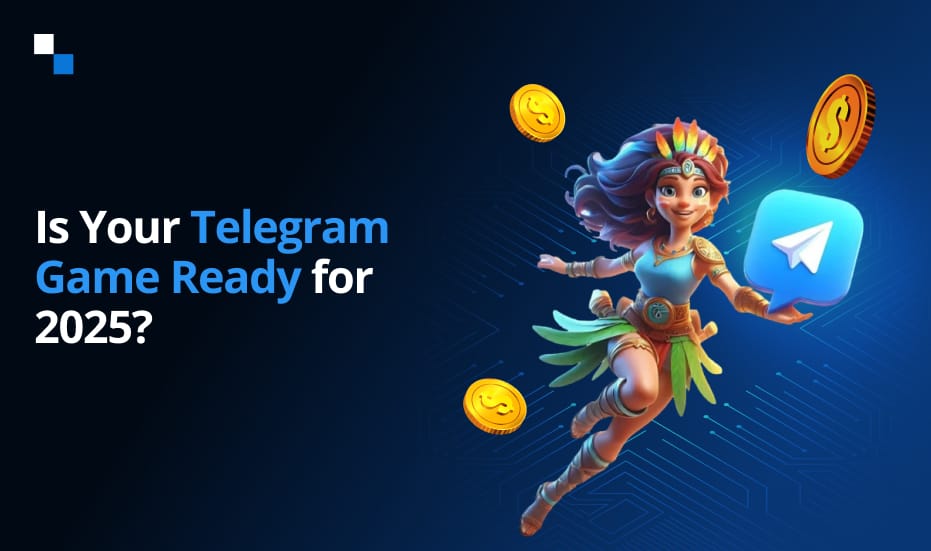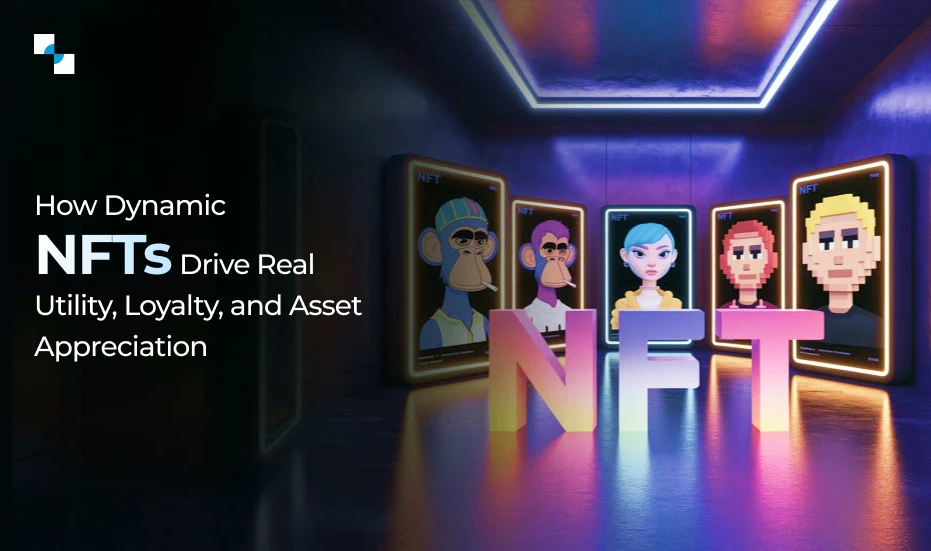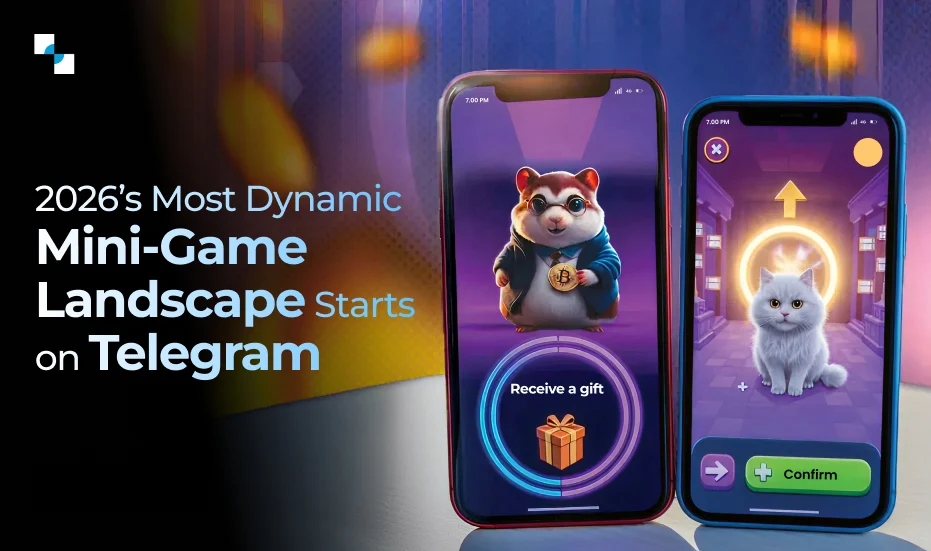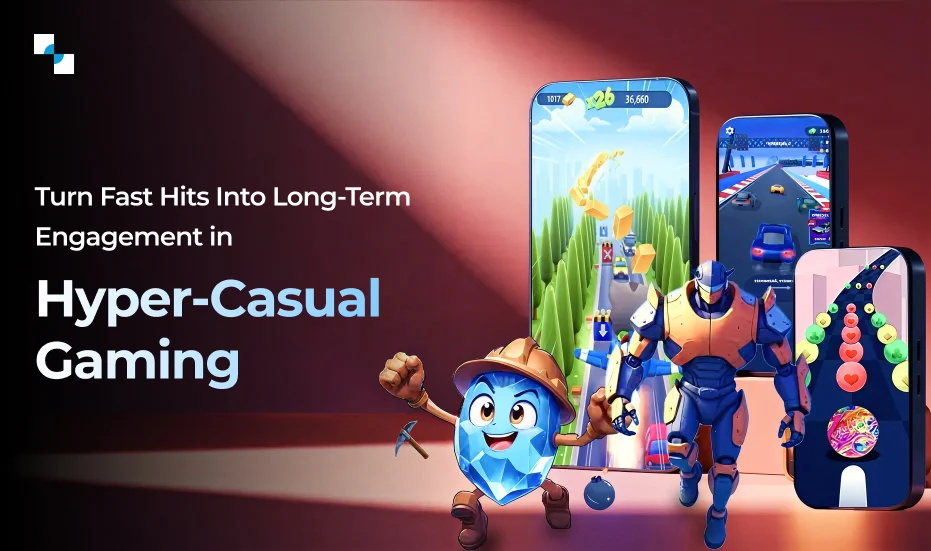The rapid growth of Web3 technologies has led Telegram crypto games to become a hot trend in decentralized gaming. In 2025, organizations and developers look to Telegram game development to access Telegram’s 900+ million user base, its easy-to-use bot ecosystem, and built-in mini app framework.
As the demand for Telegram crypto games grows, understanding the Telegram games cost in 2025 is important for startups, game studios, and blockchain investors to enter the rapidly expanding market with confidence and knowledge.
Why Telegram Crypto Games Are Gaining Momentum in 2025
Telegram is no longer just a messaging app—it has evolved into a productive ground for blockchain-powered games. The wave of Telegram games, such as Notcoin and Hamster Kombat, has demonstrated how Telegram crypto games can engage worldwide users quickly and with low friction.
Developers in 2025 prefer to develop games on Telegram game development over traditional gaming due to the quicker time-to-market, incorporated virality through Telegram channels, and the simplicity of blockchain functionality such as tokens, NFTs, and staking. The easy-to-access and heavy impact ecosystem of Telegram games will change the way many Web3 games are developed and scaled.
Explore the top 10 Telegram crypto games of 2025.
Key Cost Factors Influencing Telegram Crypto Game Development
Determining the Telegram crypto games cost in 2025 is not a one-size-fits-all approach. The pricing budget will revolve around several technical, creative, and strategic factors, all of which impact the development decisions. Whether you are developing a very lightweight tap-to-earn game alongside a Telegram mini-app or building an NFT-integrated game, here are the main factors driving cost:
1. Game Complexity & Type
The complexity of group mechanics, becomes a factor in the development cost. A simple tactile or tap to earn game can take much less to develop than a real-time player-vs-player session or a PvP game scenario that utilizes a leaderboard system, has levels, and some sort of in-game assets or live events. If the game has staking, energy refills, loot boxes, etc, all add their own layer of complexity and logic that can add to the scope of Telegram game development.
2. Blockchain
Blockchain can be an important consideration when planning the budget either TON (Telegram Open Network), Solana, Ethereum, or BNB Chain. Typically, TON is going to be preferred because it is native to Telegram, which means if it needs to connect up to another blockchain, it may require some external middleware, SDKs, and adjustments to the smart contracts. Dealing with wallets, token transactions, and gas fee optimizations will likely add to the Telegram crypto games cost in 2025.
3. Smart Contract Development
If your game uses tokens, rewards, staking, or minting NFTs, then smart contracts are really important. Smart contracts need to be written, tested, deployed, and audited to check for exploits. Being able to write a secure smart contract, especially if it’s publicly deployable – necessitates blockchain knowledge and expertise. This can be a significant cost when developing a Telegram-based game.
4. Integration of Telegram Bot & Mini App
These games are played in the Telegram ecosystem using Telegram bots and web-based mini-apps. The integration of the game logic on the Telegram Bots, the UI integration using a Telegram Web App, paid session management, or command triggers can easily add development work into both your front end and back end. The deeper the integration between your game and Telegram APIs, the more development time (and therefore budget) you’ll incur.

5. Game Art & UI/UX
While Telegram mini app games may not require high-end 3D graphics, quality UI and good UX are still essential if you want people to continue using your app. Production for animated buttons; responsive layouts; game backgrounds; and collectible icons will add to costs. The more polished the visual aspect of your game, the more UX designers and Motion artists you’ll need to be involved.
6. Backend and Database Architecture
In any business, having a scalable backend is essential to track gameplay in real time, maintain session information, and analyze player behavior. Your backend may be hosted on Firebase, AWS, or custom-built on a cloud solution, but it must consistently manage user information, token balances, in-game activities, and leaderboard placements. Advanced features like fraud detection, anti-bots, and real-time sync will increase infrastructure costs.
7. Test & Audit
Most blockchain games wouldn’t exist without rigorous testing. Game bugs, smart contract exploits, and broken flows can lead to token misuse or player drop-off. QA specialists conduct end-user testing across devices, and auditors are hired to assess contract security. Each feature and token results in longer and more taxing testing cycles, which can have a major impact on both timelines and budgets.
8. Team Size & Developer Location
Hiring a full-stack (includes blockchain, game, and Telegram experience) team is critical for developing a Telegram game. Total costs will vary based on the geographic locations of the team members. Some offshore agencies may consider India, Eastern Europe, or Southeast Asia to be cost-effective locations to build a Telegram game, whereas if you for an agency in the U.S. or the U.K., costs will rise dramatically.
9. Time-to-Market
If you’re working under a strict deadline—for example, to launch a Telegram game around a token drop or NFT event—you may need to hire additional developers, work in sprints, or pay overtime. Accelerated timelines often come with premium charges, especially when you aim to fast-track a fully functional game in 4–6 weeks.
Explore the common types of Telegram mini games.
How to Reduce Telegram Crypto Game Development Cost?
To cut the Telegram crypto games cost in 2025, a methodical approach to efficiency and innovation will be important. A good starting point for developers is the Minimum Viable Product (MVP) so they can test the core mechanics before growing it. Also, using open-source frameworks or developing re-usable assets are great ways to reduce design and coding time.
Additionally, establishing an offshore partnership with teams that specialize in Telegram game development is a viable option. Therefore, the developers could limit complicated blockchain features in the first phase, automate-stage testing, use Telegram’s tools (i.e. bots, mini apps, and viral channels), and reduce the total costs (market and development) while accelerating the time to market.
Key Questions Answered for 2025 Planning
1. Is Telegram game development cheaper than mobile game development?
Yes, Telegram game development is generally more cost-effective than traditional mobile game development. This is because of simplified game mechanics, a more loose UI, and not having to worry about deployment and marketing through app stores, since Telegram has bot and mini app distribution already built into their platform.
2. How long does it take to develop a Telegram crypto game?
It all depends on how complicated your game is, but most Telegram games usually take 3 to 8 weeks to develop. Simple tap-to-earn games can be developed and launched more quickly, while games with more advanced blockchain features such as smart contracts or NFTs will usually take a little more development and testing time.
3. Which blockchain is best for Telegram crypto games in 2025?
TON (Telegram Open Network) is the most convenient blockchain to use for Telegram crypto games in 2025, since Telegram games are a native implementation on the blockchain. Developers will use Solana, Polygon or BNB Chain based on how scalable the token project needs to be, the token strategies they are using and available use cases within their community.
4. Do I need a smart contract for my Telegram game?
You need a smart contract if your game involves on-chain features like tokens, staking, NFTs, or player rewards. For off-chain games focused purely on engagement or ad monetization, a smart contract may not be necessary in the initial phase.
5. What are the legal considerations for launching a Telegram-based crypto game?
Legal aspects include token compliance, KYC/AML regulations (if handling crypto assets), and adherence to regional gaming and gambling laws. It’s recommended to consult legal advisors to ensure your Telegram crypto game meets all jurisdictional and blockchain-specific regulatory standards.
Partner with Antier to develop secure, scalable, and engaging Telegram crypto games for the evolving Web3 ecosystem.







